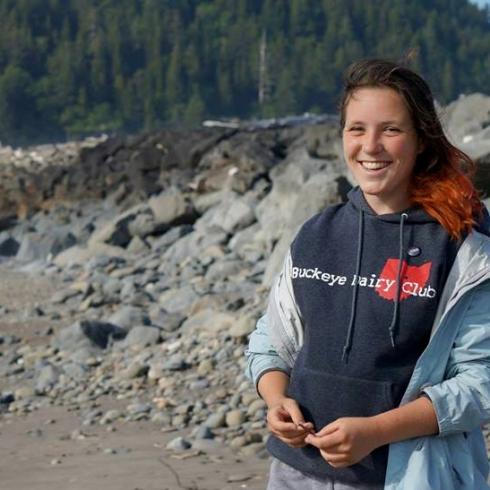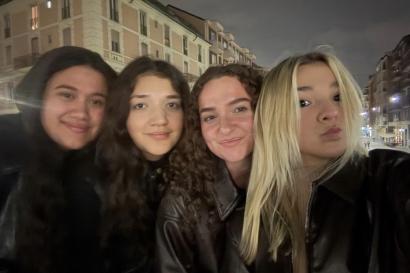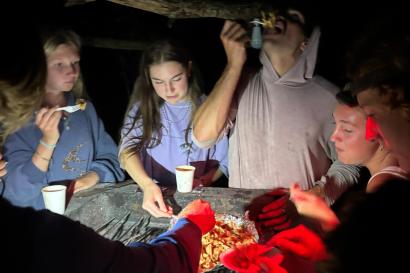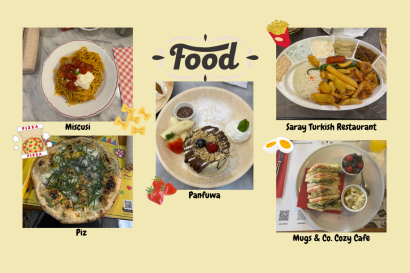Quito is known for its incredible historical district, El Centro Histórico. My host mom, dad, and abuela took me there on one of my first nights. The streets are so narrow that one lane of cars can barely fit through. Cars parallel park half on the sidewalk and half in the lane of traffic. Each block has an unofficial attendant who will walk into the street to block traffic while you park. The driver pays a few dollars for this service, which is not optional. Police are everywhere and so are thieves. The police were dressed in traditional clothing: tall hats, navy blue capes with golden epaulets, and shiny black boots. They only dress this way in August to celebrate independence month, so I guess I had lucky timing!

Well, I’m glad to know they have the tent, at least…
On Tuesday, I returned to El Centro Histórico on a school-sponsored tour. In Ecuador, the tour guides are university-trained and employed by the state. Our guide, Patricia, was incredibly knowledgeable. The most extraordinary site was La Iglesia de la Compañía de Jesús.

La Iglesia de la Compañía de Jesús
The city is filled with churches that date back to the 16th century (!) but this one is special. From the outside, its brown walls stand out as the most ornate. Inside is another world. The church is nicknamed “La Iglesia de Oro,” The Church of Gold, because the cavernous interior is coated in 22 carat gold leaf, and a large portion of the front alter is solid gold! I’m no expert in religious art, but I was interested to learn that Quito is unique in its portrayal of religious scenes. For example, the sculpture of Jesus on the cross was more bloody and damaged than any European portrayals, and La Virgen de Quito (a huge statue which presides over the city from a nearby hill) is the only Virgen Mary with wings. Apparently the sculptor wanted to portray Mary during the apocalypse, and reasonably assumed she would need wings to return to Earth.

La Virgen de Quito
A second site of note was Casa de Alabado: Museo de Arte Precolombino. This house-turned-museum showcased tons of figurines, carvings, and dishes from the pre-Colombian cultures of Ecuador. The Incas were here for only the 100 years before Columbus; the Valdivia culture had been carving stone figurines since 4,000 BC!
Below are a few photos from the tour. I tried to shoot the interesting details as well as the famous monuments. Hope you enjoy!

Nina Finley
<p><span style="color: rgb(29, 29, 29); font-family: Arial, Verdana, sans-serif; font-size: 12px; line-height: normal; background-color: rgb(237, 237, 237);">Nina Finley is a sophomore at The Ohio State University. She ventured to the Midwest from her hometown of Seattle, Washington to major in Animal Sciences and Evolution & Ecology. She would like to become a livestock vet or marine biologist. When she’s not studying, Nina loves to play ultimate frisbee, watch birds and raise meat rabbits. She’s passionate about agriculture, nature and Spanish, all of which she hopes to explore in Ecuador. Join the journey as Nina traces Darwin’s path and explores the natural wonders of the Galapagos Islands!</span></p>








